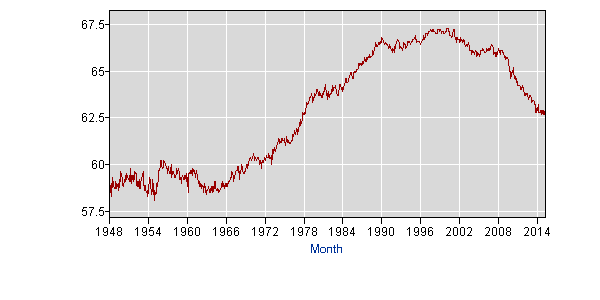May saw the U.S. economy continue to show mild improvements, with 280,000 jobs added in the month. It was the largest gain in a single month this year, whereas the average monthly gain so far in 2015 has been 217,000 new jobs. This is a welcome change after a slow winter, when job numbers dipped, partially due to areas such as the northeast and parts of the south dealing with harsh weather, as well as the West Coast port strike and the dampening effects of the stronger dollar on international trade.
The jump in new jobs was about 22% above the average prediction by financial experts, who estimated there would be closer to 220,000 jobs added in May, a near mirror of the 221,000 added the previous month. Private businesses added 262,000 of those jobs. Government positions across all levels added another 18,000. Professional and business services, leisure and hospitality, and health care industries did well, as did retail. The news was not as positive for the mining sector, which lost 17,000 jobs, mainly due to oil companies reducing staff in response to the still low crude oil prices.
Economists have talked over the last few years about the need not only for more jobs, but also for higher wages in order for the economy to see a major leap forward. May had some good news in that area. Average hourly earnings for all employees on private nonfarm payrolls increased to $24.96, an increase of 8 cents over last month, and 56 cents over last year. Average hourly pay is up 2.3% in the last year, compared to a 2.2% year-over-year increase in April.
The unemployment rate rose slightly to 5.5%, up from April’s 5.4%. The minor uptick isn’t considered a cause for concern because the increase is believed to be from more people entering the work force. The labor force, a combination of those already in jobs as well as those now searching for employment, added 397,000 people in May, and unemployed new entrants, those who have never been employed before, edged up by 103,000. The number of long-term unemployed (those jobless for 27 weeks or more) held steady at 2.5 million in May, accounting for 28.6% of the unemployed, but is down by 849,000 over the past 12 months.
The labor force participation rate edged up to 62.9% in May from 62.8% in April. However, it hasn’t changed much over the last year and is still below the rates typically seen since the late 1970s, as shown in the chart below. Similarly, the proportion of the working-age population that is employed rose to 59.4%. That’s the highest percentage reached since the recovery began 6 years ago, although it’s still significantly below prerecession levels.

Chart of historical U.S. labor force participation rates courtesy of U.S. Bureau of Labor Statistics.
May’s strong labor numbers will probably not lead to an interest rate bump by the Federal Reserve in the next 2 months. However, if the economy continues to push ahead, many analysts think a rate increase could be around in the corner in September. Others think the increase is unlikely to occur before next year.
The latter view seems to agree with the International Monetary Fund’s recent review of the U.S. economy, which suggested that the Federal Open Market Committee (FOMC) wait “until there are greater signs of wage or price inflation” before raising the federal funds rate, likely in the first half of 2016.
Where do you see the economy headed this summer? Do you think we will see enough improvement for the FOMC to raise rates soon? Let us know in the comments.




Recent Comments